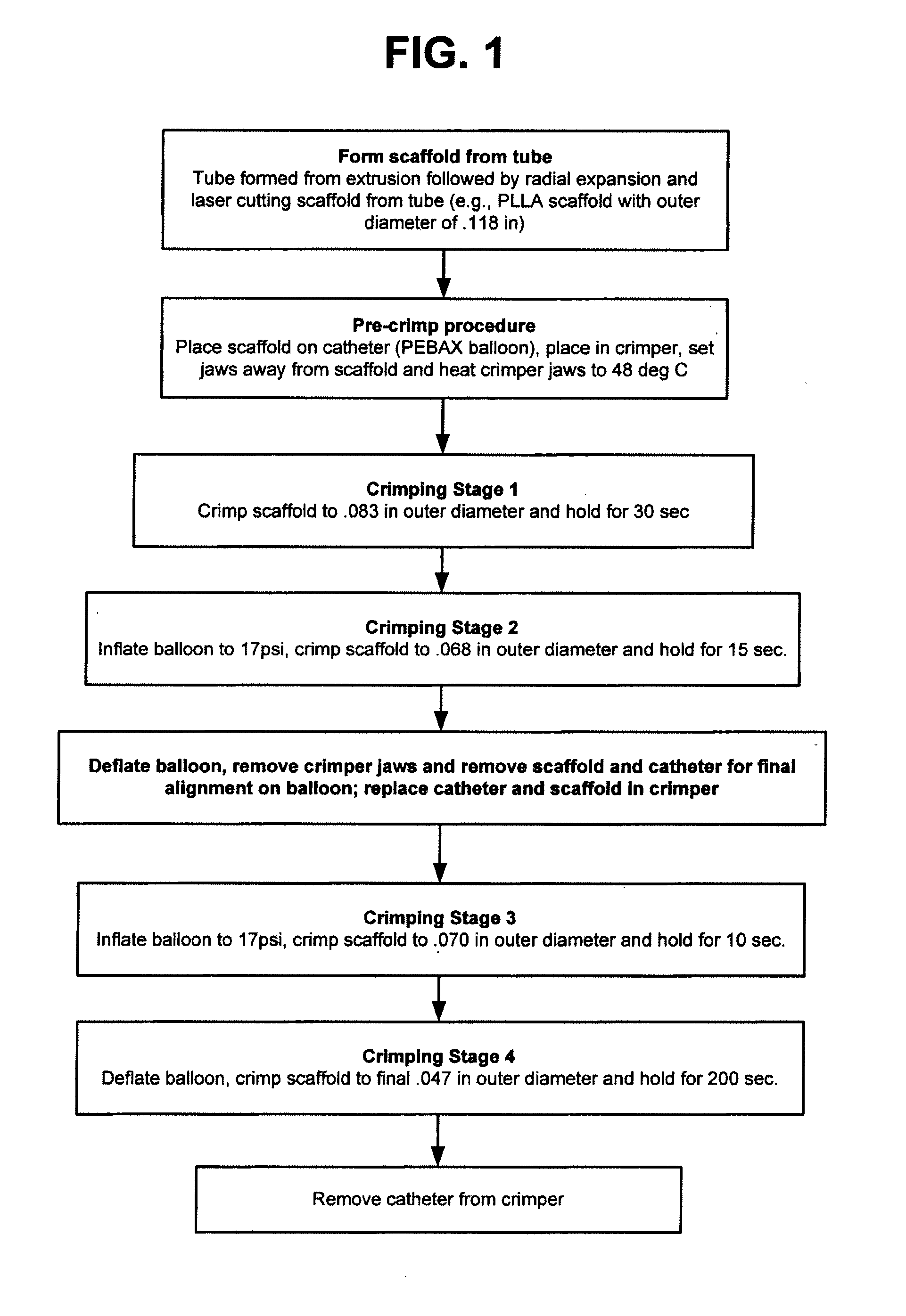Methods for Crimping a Polymeric Stent Onto a Delivery Balloon
a polymeric stent and delivery balloon technology, applied in the field of drugeluting medical devices, can solve the problems of difficult crimping of a stent from a relatively large starting diameter, more cracks when the stent is deployed, and the deformation must be performed at a rate too slow for practical use in stent production, so as to improve the retention force of the balloon and the precise control of the crimping temperature
- Summary
- Abstract
- Description
- Claims
- Application Information
AI Technical Summary
Benefits of technology
Problems solved by technology
Method used
Image
Examples
Embodiment Construction
The “glass transition temperature,” Tg, is the temperature at which the amorphous domains of a polymer generally change from a brittle, vitreous state to a solid deformable or ductile state at atmospheric pressure. In other words, the Tg corresponds to the temperature where the onset of noticeable segmental motion in the chains of the polymer occurs. When an amorphous or semi-crystalline polymer is exposed to an increasing temperature, the coefficient of expansion and the heat capacity of the polymer both increase as the temperature is raised, indicating increased molecular motion. As the temperature is raised the actual molecular volume in the sample remains constant, and so a higher coefficient of expansion points to an increase in free volume associated with the system and therefore increased freedom for the molecules to move. The increasing heat capacity corresponds to an increase in heat dissipation through movement. Tg of a given polymer can be dependent on the heating rate an...
PUM
| Property | Measurement | Unit |
|---|---|---|
| Temperature | aaaaa | aaaaa |
| Temperature | aaaaa | aaaaa |
| Temperature | aaaaa | aaaaa |
Abstract
Description
Claims
Application Information
 Login to View More
Login to View More - R&D
- Intellectual Property
- Life Sciences
- Materials
- Tech Scout
- Unparalleled Data Quality
- Higher Quality Content
- 60% Fewer Hallucinations
Browse by: Latest US Patents, China's latest patents, Technical Efficacy Thesaurus, Application Domain, Technology Topic, Popular Technical Reports.
© 2025 PatSnap. All rights reserved.Legal|Privacy policy|Modern Slavery Act Transparency Statement|Sitemap|About US| Contact US: help@patsnap.com



